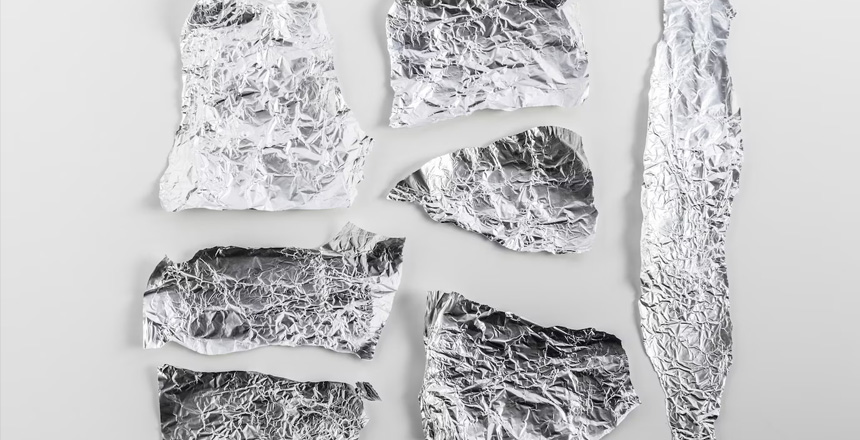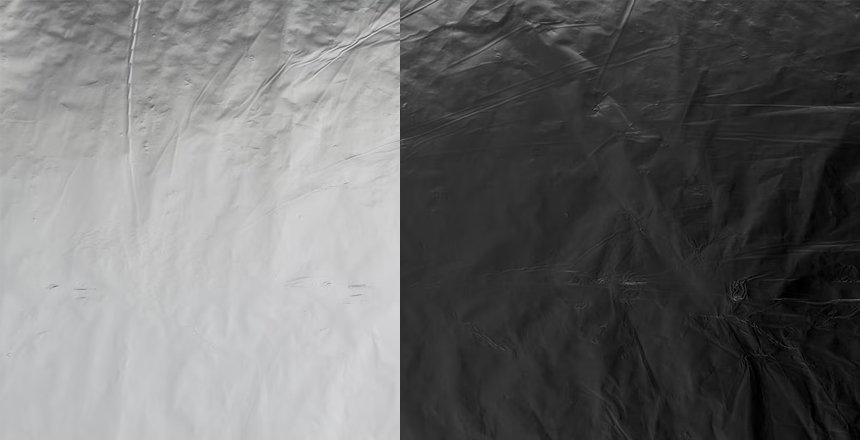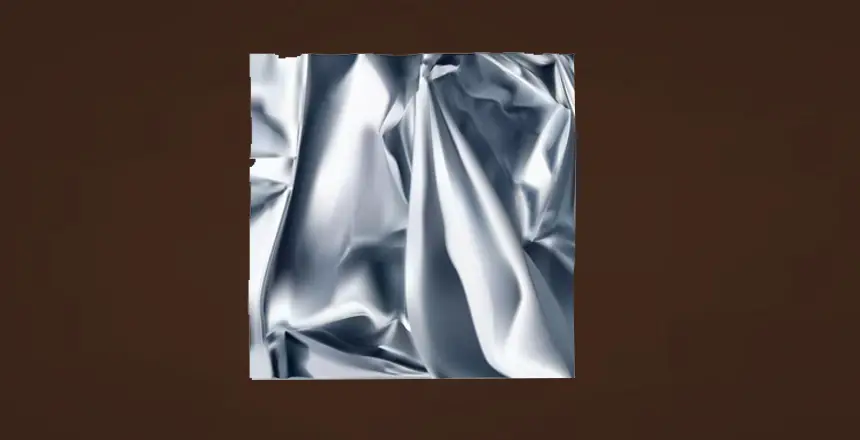Have you ever cooked something with aluminium foil and wondered which side of the foil should actually face up? Or maybe you’ve tried baking a delicious cookie recipe in the oven only to have your cookies turn out underdone – or worse, burnt!
You might be surprised by this, but when it comes to using aluminium foil there’s an answer that will help make sure your dishes come out hot and tasty every time. Read on to discover the amazing power of aluminum foil: which side should you use?
Understanding Aluminum Foil

Aluminum foil is made of thin sheets of aluminum that are rolled into a continuous roll. It is a type of metal that is very malleable and can be easily molded into different shapes.
The manufacturing process of aluminum foil involves a series of steps that include melting the aluminum, casting it into large ingots, and then rolling it into thin sheets. The sheets are then annealed, or softened, to make them more flexible and easier to work with.
Finally, the sheets are coated with a thin layer of lubricant to prevent them from sticking together during the rolling process.
The composition of aluminum foil is typically around 92-99% aluminum, with the remaining 1-8% made up of other metals or elements added for specific properties such as strength or flexibility.
Click here for more information about aluminum foil.
Scientific Explanation of the Difference Between the Two Sides

The shiny and dull sides of aluminum foil are actually the same. The difference in appearance comes from the manufacturing process. Here is a more detailed explanation of the scientific difference between the two sides:
Production Process
During the manufacturing process, aluminum sheets are passed through rolls under high pressure. This process produces two shiny sides and one dull side.
Surface Finish
The shiny side is the result of the foil rolling process. The surface of the aluminum foil is rolled on highly polished rollers until it is shiny. The dull side is the result of a matte finish created during the rolling process. The dull finish helps the aluminum foil to diffuse heat and prevent sticking.
Reflectivity
The shiny side of aluminum foil reflects more light and heat than the dull side. This is because the shiny side is smoother and has less surface area to absorb radiation. However, the difference in reflectivity is very small and is unlikely to affect the outcome of your cooking or baking.
Heat Conduction
The dull side of aluminum foil absorbs more heat than the shiny side. This is because the dull side has a larger surface area, which allows it to absorb more heat. As a result, the dull side is better suited for wrapping food that needs to be cooked at lower temperatures.
Overall, while there is a difference between the shiny and dull sides of aluminum foil, it is not significant enough to affect your cooking or baking results. You can use either side of the foil without any major impact on your food.
Which Side Should You Use?
Aluminum foil has two distinct sides: shiny and dull. Many people believe that one side is non-stick and should be used for food contact, while the other is more reflective and should be used for heat reflection.
However, the truth is that there is no significant difference between the two sides in terms of functionality or safety. Both sides of aluminum foil are equally effective for cooking, freezing, and storing food.
The main difference between the two sides is the manufacturing process. The shiny side is the result of the foil being rolled between two layers, while the dull side is the result of being rolled between a layer and a sheet.
The choice of which side to use ultimately comes down to personal preference or specific instructions in a recipe.
Tips for Using Aluminum Foil
Aluminum foil is an indispensable kitchen tool. Here are some tips for using it safely and effectively:
• Always use food-grade aluminum foil that is specifically designed for cooking.
• Preheat the oven before wrapping food in foil to prevent sticking.
• Don’t use foil to cover foods that are heavily seasoned or acidic as the foil will absorb the flavors.
• Use caution when removing hot dishes from the oven that are wrapped in foil, as steam can be very hot.
• When storing food in the refrigerator, use foil to seal in freshness and prevent spoilage.
• Dispose of used aluminum foil properly as it can be hazardous to wildlife if left outdoors.
Recipes Using Alumnium Foil
Looking for easy and delicious recipes that utilize aluminum foil as a key ingredient? Look no further! With just a few ingredients and some trusty aluminum foil, you can create an array of mouth-watering meals that will satisfy even the pickiest of eaters.
For a hearty and satisfying dish, try making foil packet potatoes. Simply slice your potatoes thinly and layer them on a piece of foil. Drizzle with olive oil and sprinkle with your favorite seasonings, then fold the foil into a tight packet and bake in the oven until tender and golden.
Click here to learn more about baking potatoesin foil.
For a protein-packed meal that the whole family will love, try making foil packet chicken. Season your chicken breasts and place them on a piece of foil with some veggies of your choice. Fold the foil into a packet and bake until the chicken is juicy and cooked through.
With these recipes, aluminum foil has never tasted so good!
FAQs
Can you use both sides of aluminium foil?
Yes, both sides of the foil can be used for different purposes. The shiny side is more reflective and works better as a heat reflector, while the dull side has better heat absorption properties and can be used to wrap or store food.
Does the shiny side of aluminium foil reflect more heat?
Yes, the shiny side of aluminum foil is more reflective and therefore will reflect more heat than the dull side. The dull side will absorb more heat, making it better for use when wrapping or storing food.
Does it matter which side of the foil touches food?
Yes, it does matter which side of the foil touches food. The shiny side should be placed towards the food to reflect heat and prevent burning or drying out of your meal. The dull side should face outward for proper heat absorption.
Can you use aluminium foil in the microwave?
Yes, you can use aluminum foil in the microwave. However, it is important to note that aluminum foil should not have any contact with the walls or ceiling of the oven, as this could cause arcing and sparking.
Additionally, aluminum foil cannot be used to cover or wrap food in a conventional oven, as it will melt at high temperatures.
Can aluminium foil be recycled?
Yes, aluminum foil can be recycled. Aluminum is a highly recyclable material and can easily be melted down and reused for other products. However, it is important to make sure that the foil is clean before recycling.
Is aluminium foil safe to use for cooking and baking?
Yes, aluminum foil is safe to use for cooking and baking. The foil can be used to wrap or store food, line pans and trays, and even make packets of roasted vegetables. Just make sure to place the shiny side towards your food while wrapping or storing it.
Key Takeaway
It turns out that not only is it important to understand which side of aluminium foil you should use for different foodstuffs in order to get the best performance, but also to understand what other kinds of options are available.
From using bakers parchment paper or grease-proof paper instead of aluminium foil when baking, to reusing layers of foil over and over again – there are many ways to keep your food safe while preserving its flavour.
Whatever recipe or project you decide on, always remember the surprising answer: which side should you use? And with this answer in mind, don’t forget to focus on safety first! Have fun cooking!


